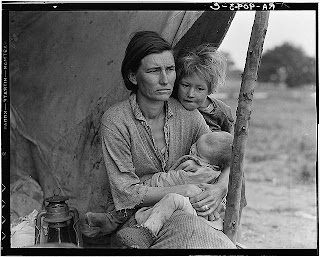 |
| Photo Taken by Kathy A. Adams "Hope in the prison of Poverty" |
Steve McCurry has definitely impacted today’s aspiring photographers. His portfolio of work has made him a very well known photographer across the world. His style of photography is capturing different cultures and making poverty a concern for the world to understand. McCurry says “Most of my pictures are grounded in people. I look for the unguarded moment, the essential should peeking out, experience etched on a person’s face. I try to convey what it’s like being that person, a person caught in a border landscape that I guess you'd call a human condition." He has traveled the world and definitely has a great appreciation for different cultures and natural human nature. Steve realized the capturing an unguarded photo is where the real person is being displayed. Looking at his gallery myself you see many different stories through the eyes of these children you witness struggle and someone in need. McCurry uses different types of photos. He has captured children, landscapes, famous artifacts, pretty much anything that is important that the world should see. Steve McCurrys possible impact on other photographers is very reasonable to say there is. Photographers always want to travel and capture what goes on around the world. Today’s photographers are out doing the same kind of work Steve McCurry built his reputation of doing. The purpose of these photos regardless of who’s taking it is to see deep down and focus on what’s going on around the world. If it’s in little girls eyes, you still can see the story just by looking at her. Someone in Africa suffering because they can’t eat, or a mother with three of four children without the ends meat to feed herself and her children. These are all stories that photographers want to make us as people who see this pay attention because we take what we have for granted. We may say we do not have much but at the end of the day, there are children and families who truly have less than we do and don’t have as big of an opportunity that we do. McCurry has a big impact on the photos due to his long history doing these photos, he is more than likely looked up too as a photographer, just based off his reputation I would assume he has done many seminars and was a guest speaker at some events to make other photographers today to get an understanding as to what he does and why he decided to go the route he has chosen. Photography will always be innovative, there will always be someone taking the same kind of photos with a different approach, As long as the picture is pure, and its understood and possibly relatable is what makes the picture what I would call “epic”.
 |
| Portraits from Africa, an exhibition of photography by John Kenny |
 |
















